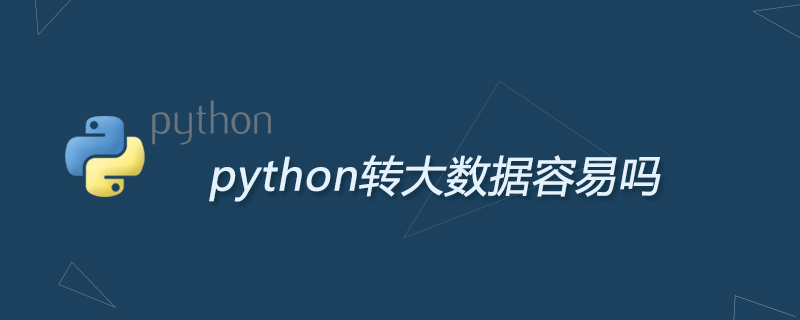
Data is an asset. Big data engineer is a very hot and high-paying position now. Not only Java is used for big data development and analysis, Python is also the most important language.

So, today we will analyze the significance and role of Python in big data. (Recommended learning: Python video tutorial)
What is big data?
Big data refers to a collection of data that cannot be captured, managed and processed within a certain time range using conventional software tools. It requires new processing models to have stronger decision-making power. Massive, high-growth and diverse information assets with insight discovery and process optimization capabilities.
Why is python big data?
From the encyclopedia introduction to big data, we can see that if big data wants to become an information asset, two steps are required. One is how the data comes from, and the other is data processing.
How does the data come from:
As for how the data comes from, data mining is undoubtedly the first choice for many companies or individuals. After all, most companies or individuals do not have The only way to generate so much data is to mine relevant data on the Internet.
Web crawlers are Python’s traditional strong areas. The most popular crawler framework Scrapy, HTTP tool kit urlib2, HTML parsing tool beautifulsoup, XML parser lxml, etc. are all class libraries that can stand alone.
Of course, web crawlers don’t just open web pages, how simple is it to parse HTML. An efficient crawler must be able to support a large number of flexible concurrent operations, and often be able to crawl thousands or even tens of thousands of web pages at the same time. The traditional thread pool method wastes a lot of resources. After the number of threads reaches thousands, system resources are basically wasted. Thread scheduling is on.
Because Python can well support coroutine operations, many concurrency libraries have been developed based on this, such as Gevent, Eventlet, and distributed task frameworks such as Celery. ZeroMQ, which is considered more efficient than AMQP, was also the first to provide a Python version. With support for high concurrency, web crawlers can truly reach the scale of big data.
Data processing:
With big data, you also need to process it to find the data that suits you. In the direction of data processing, Python is also one of the favorite languages of data scientists. This is because Python itself is an engineering language. The algorithms implemented by data scientists in Python can be directly used in products, which is very important for big data startups. Cost savings can be very helpful.
It is precisely for these reasons that the python language has become the first choice for many companies to process big data. In addition, python itself is simple, easy to learn, and has many libraries, so more and more people choose to switch to python.
For more Python related technical articles, please visit the Python Tutorial column to learn!
The above is the detailed content of Is it easy to convert Python to big data?. For more information, please follow other related articles on the PHP Chinese website!